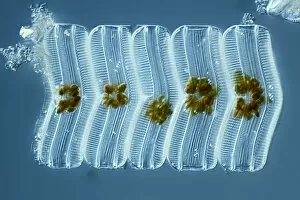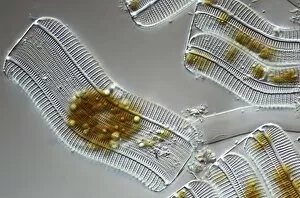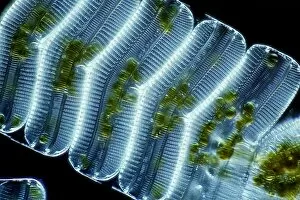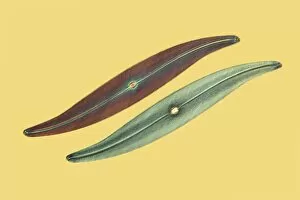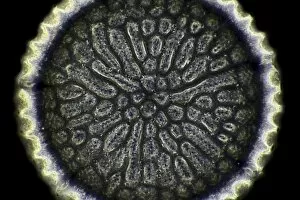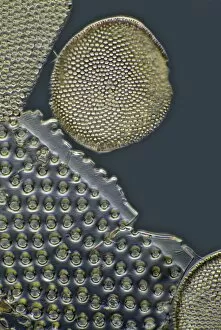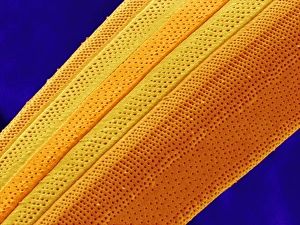Stria Collection
Stria: The Intricate Beauty of Diatom Cell Walls Revealed Diatoms, microscopic algae with intricate cell walls made of silica
All Professionally Made to Order for Quick Shipping
Stria: The Intricate Beauty of Diatom Cell Walls Revealed Diatoms, microscopic algae with intricate cell walls made of silica, are a fascinating subject for scientific exploration. With the help of scanning electron microscopy (SEM) and light micrographs, we can delve into the mesmerizing world of diatoms and appreciate their stunning beauty. In SEM image C014 / 4673, we observe Tabellaria diatoms showcasing their delicate structures. These organisms possess unique patterns on their cell walls known as striae or striations. These fine lines run parallel to each other and create mesmerizing arrangements that resemble works of art. Moving on to SEM image C016 / 9599, we encounter another group of Tabellaria diatoms displaying their intricate striae under high magnification. The level of detail captured by this technique allows us to marvel at the precision and symmetry present in these tiny organisms. Exploring further through time, fossilized diatoms come into view in light micrograph C016 / 8603. Preserved over millions of years, these ancient specimens provide valuable insights into Earth's history while showcasing the evolution and diversity within the diatom family. Returning to living counterparts in SEM images C016 / 9600 and C016 / 9601, we witness Tabellaria diatoms once again revealing their enchanting striae patterns. Each individual showcases its own unique arrangement, highlighting nature's ability to produce endless variations even at such small scales. The journey continues with a series of captivating light micrographs (C014/4675-4668), where various species demonstrate their distinct striae designs. From simple yet elegant lines to more complex formations resembling lacework or honeycombs – each one is an exquisite testament to nature's creativity. Studying these remarkable images not only provides aesthetic pleasure but also contributes significantly to scientific research.









